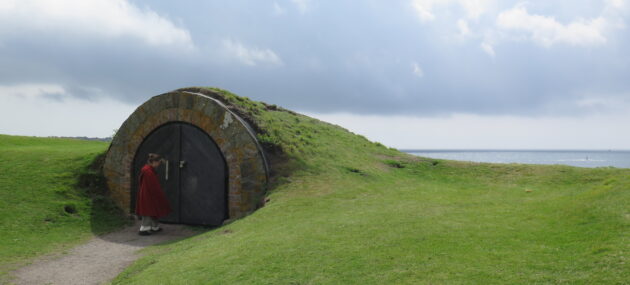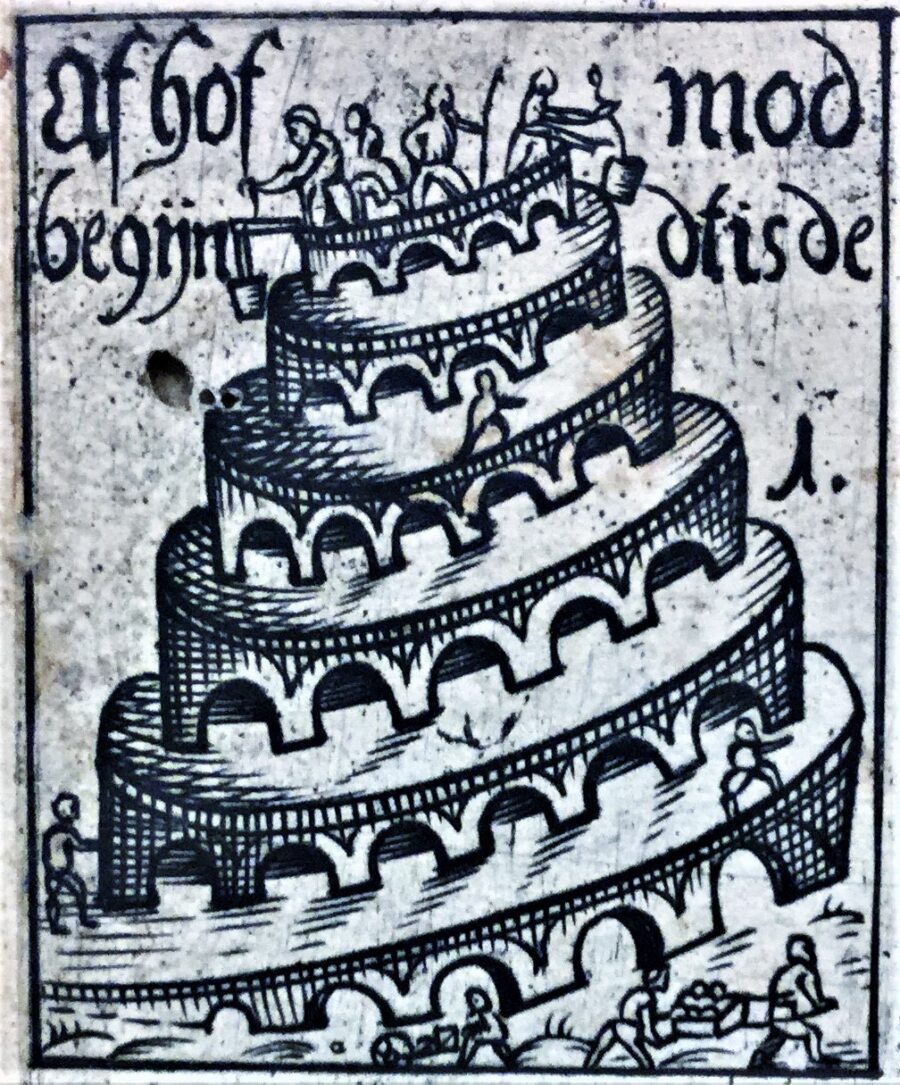This website uses cookies so that we can provide you with the best user experience possible. Cookie information is stored in your browser and performs functions such as recognising you when you return to our website and helping our team to understand which sections of the website you find most interesting and useful.

A Bulletproof Connection
One of the most charming features of the Round Tower is its distinctive Spiral Ramp, which runs just over 200 metres from the street of Købmagergade to the entrance of the Observatory at the top of the tower. The Spiral Ramp is, however, also one of the greatest mysteries of the old tower. For why on earth build such an odd thing in the middle of Copenhagen?
“As we know, the easiest way to reach Heaven is to build upwards”
This is a question many have tried to find an answer to, and the answers point in different directions. As is often the case when one is dealing with the Round Tower, one needs to be careful not to let one answer preclude the other. The extensive length of the Spiral Ramp makes room for several valid explanations of the same phenomenon.
Tower of Babel
If one digs deep in the pile of drawings and engravings from the 1500s and 1600s, it is possible to find a surprising amount that includes towers with spiral ramps. Several of them are attempts at depictions of the great temple tower that, in ancient times, existed in the capital Babylon, or Babel, as the city is called in Hebrew. In the Old Testament, the tower, which the historian Herodotus (c. 480–c. 420 BC) described as having an exterior stairway shaped like a spiral, is identified with the tower that the soaring people tried to build but were unable to finish because Lord God confused them by giving them different languages.
Although the myth is often interpreted as God’s reproof of the insubordinate people, more positive associations also began to occur during the Renaissance, when the Tower of Babel was looked upon as the very symbol of a forgotten wisdom that the scholars of the time strived to rediscover. Thus, the answer to why the Round Tower has a spiral ramp draws on a comprehensive set of ideas about ancient teachings and divine insight.
The King’s Gout
But the Spiral Ramp also draws on more specific edifices. Several other examples of ramps without steps from the 1500s and 1600s exist. They were constructed with the purpose of transporting members of princely houses in a way that suited their social stratum, as well as comfortably, to their elevated chambers. One example is the old castle in Berlin, which the Round Tower’s builder, Christian IV (1577-1648), visited in his youth and where there was a so-called riding spiral or “Reitschnecke” as the phenomenon is called in German.

The astronomer Christian Longomontanus (1562-1647), who made suggestions for the organisation of the Observatory during the construction of the Round Tower, indicates that the Spiral Ramp was made so that Christian IV could be transported up to the Observatory, even though it is not known whether he has ever taken the trip on horseback, in a wagon or a litter. Later proposed solutions to the puzzle of the Spiral Ramp have suggested that it was made in order to ease the conveyance of astronomical instruments to the top of the tower.
However, none of the explanations are entirely satisfactory, for, as the architect Helge Finsen (1897-1976) writes when discussing the Spiral Ramp, “The usual Baedecker explanation of its construction is that it should facilitate the transport up to the observatory of the gouty King Christian and of the heavy instruments. But this grandiose device seems to be too strong a consequence even of a royal gout, and with regard to the instruments, it was easier to hoist them up and down when they had to be replaced.” Finsen therefore concludes, “The answer to why a spiral ramp has been constructed probably first and foremost lies in the beauty and oddity of it, even though the convenience of it has not been entirely insignificant either.”
What the Bastion Hid
In brief, the Round Tower’s Spiral Ramp has a bit of everything. The situation differs and is a tad more straightforward when it comes to the only other spiral ramp that existed on Danish soil at the time the Round Tower was built. It is located in the Swedish town of Varberg in Halland, which was Danish until 1645, and is built by Christian IV as well.
Varberg played an important role in the long-standing conflicts between Denmark and Sweden, especially in the Northern Seven Years’ War from 1563 to 1570, during which the Swedes at one point succeeded in taking over the town’s castle. The Danish troops did, however, win it back, whereupon Christian IV extended the castle and made it into one of the most modern fortifications in Northern Europe at that time.
A number of star-shaped bastions were constructed, and in one of them, the so-called Grey Monk located in the southeast corner of the fortress, a passage was made with the purpose of connecting the bastion with emplacements that were positioned at a lower level. Thus, as has been pointed out, “a bulletproof connection between the different batteries in and on the bastion” was formed.

Telephone and Lift
And that is not all. It is this passage that has the most charming little spiral ramp, which has proven to have several practical benefits. “It has made it possible to move the troops and arms around as needed and in complete safety during an attack”, Helge Finsen thus writes.
“A lot of other things have been simplified by it, both giving commands and transporting munitions. The commanding officer of the bastion, who was probably positioned at its top, has been able to shout out his orders down through a cylinder – and, if needed, the cannon balls could roll down to the lower batteries by themselves. The spiral ramp could, to some extent, substitute for both a telephone and a lift.”
The spiral ramp is not the only thing that resembles the Round Tower. There are niches in the outer walls and on the opposite side of the spiral ramp one finds openings into a hollow core, which allows light to come in from above. The Round Tower’s Spiral Ramp also has niches and a hollow core with openings, which are now covered, but are believed to have been initially open, even though it is doubtful whether an opening has ever existed at the top.
A Practical Prototype
There have been doubts about the exact building period of Varberg’s spiral passage, which is called Kokkenborg in Danish and Kockenburg in Swedish. Once, it was believed to be in the 1580s, later it was believed to be in the early 1600s but it was most likely finished around 1625. In any case, it happened under Christian IV’s rule and probably with the assistance of the King’s master builder, Hans van Steenwinckel the Younger (1587-1639), who is also partly credited for the Round Tower. Thus, a bulletproof connection exists here too.
Kokkenborg, which has even been called an “ingrowing Round Tower”, can in many ways be regarded as a kind of practical prototype of the Spiral Ramp in Copenhagen. And in Varberg, there is not a shred of Babylonian confusion. As we know, the easiest way to reach Heaven is to build upwards.



